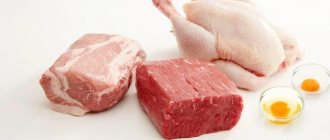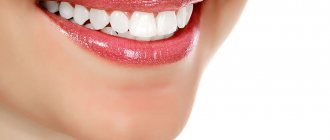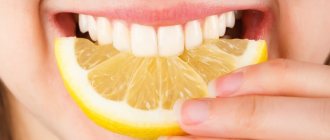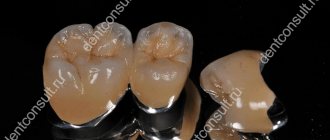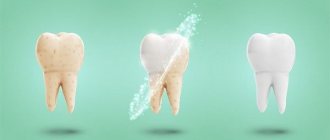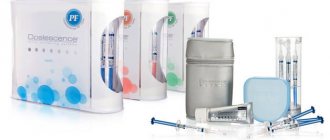Does activated charcoal really whiten teeth?
Due to its structure, activated carbon powder is an excellent abrasive.
Activated carbon powder has the unique ability to absorb impressive volumes of liquid along with the toxins it contains.
Coal has another unique property.
Due to its structure, activated carbon powder is an excellent abrasive, soft and at the same time allows you to remove plaque and make the enamel several tones lighter.
The coal particles are so small that there is virtually no risk of damaging enamel and gums.
Of course, it will not be possible to achieve a salon effect, and after a couple of sessions of such home whitening, your teeth will become only two or three shades lighter, but the result will be obvious to everyone who sees your smile.
In addition, the cost of a package of activated carbon is so low that it is worth experimenting with this safe product, which can be safely used at home.
Opalescense – teeth whitening with trays
Home teeth whitening with trays from Opalescense is one of the most popular home whitening methods in Europe and the USA. Opalescense whitening kits are produced by a well-known manufacturer of dental materials - the company ULTRADENT (USA), which also produces products for professional whitening at the dentist (i.e. you will get a really high-quality product).
There are 2 options for whitening with the Opalescense system -
- Opalescence PF (from 4500 rubles) –
contains bleaching gel based on carbamide peroxide at a concentration of 10%, 15% or 20%.
You can buy Opalescence PF (Fig. 6) in any of these concentrations. In addition to the active substance, the teeth whitening gel also contains potassium nitrate and sodium fluoride, which are necessary to reduce tooth sensitivity, which often develops due to whitening. Whitening with Opalescence PF is no less effective than professional whitening techniques. However, this particular Opalescence option will require more effort from you. The fact is that Opalescence PF teeth whitening gel is intended for use only in individual trays (Fig. 7-9), for the manufacture of which you will still have to go to the dentist once. Dental trays are reusable, and in the future you can use them for repeated whitening courses.How it is carried out - individual trays with whitening gel added to them are placed on the teeth for the whole night (this is the most convenient option). You can also do this during the daytime. The duration of whitening can be from 1-2 hours to 8-10 hours daily, which will depend on the concentration of carbamide peroxide used, how pronounced the effect you want to achieve, as well as on the degree of tooth sensitivity. The whitening process is as follows:
Kit Contents - The kit includes 8 syringes of 10, 15 or 20% carbamide peroxide whitening gel, 1 tray storage container, Opalescence toothpaste, travel bag case, and a tooth shade guide so you can keep track of change in tooth color.
By the way, a similar whitening product to Opalescence PF are kits under the “Perfect Bleach” brand from the German company VOCO (with 10 or 16% concentrations of carbamide peroxide). VOCO is also a renowned manufacturer of dental materials. Perfect Bleach (as well as Opalescence PF) requires custom-made dental trays.
Application of Opalescence PF: video
- Opalescence TresWhite Supreme (about 6,000 rubles) – this version of the Opalescence kits is whitening for the “lazy”. This set already contains universal gel-filled mouthguards (Fig. 10), which only need to be applied to the upper and lower dentition. Opalescence TresWhite Supreme uses a whitening gel based on 10% hydrogen peroxide, rather than carbamide peroxide like Opalescence PF.
The mouthguards in the TresWhite Supreme sets are made of two layers (Fig. 11). The outer green layer is protective - it is removed after the mouth guard is inserted into the oral cavity. A viscous whitening gel is applied to the inner transparent layer, and therefore, after inserting the tray into the mouth, it remains on the teeth. Next, you will only need to adapt, i.e. press it tightly to your teeth (Fig. 12-15). Mouthguards for the upper and lower jaws have different sizes due to the different shapes of the dentition.
How is it carried out? Because hydrogen peroxide is more aggressive than carbamide peroxide, the entire whitening process will take no more than 30 to 60 minutes a day (you can adjust the duration of the procedure yourself, but within these time intervals). After just 5 days you will notice visible results. The advantage of this option is that there is no cost for making individual aligners, but whitening in hard-to-reach areas, for example, in the interdental spaces, will be worse.
Applying a two-layer mouthguard to teeth -
Set contents – the Opalescence TresWhite Supreme set contains 10 aligners for the upper jaw and 10 aligners for the lower jaw. You can choose your own version of the set with different flavors - mint, peach or melon. The cost will be about 6,000 rubles. When purchasing from Russian suppliers, you will receive detailed instructions in Russian.
Application of Opalescence “TresWhite Supreme”: video
Which is better: Opalescence "PF" or "TresWhite Supreme"?
Although carbamide peroxide and hydrogen peroxide have similar effects, you may have noticed that products containing them have very different concentrations. The fact is that a 10% carbamide peroxide whitening gel will correspond in strength to a 3.5% hydrogen peroxide-based gel. And 15% urea peroxide gel = 5.5% hydrogen peroxide (respectively, 20% urea peroxide = 7.5% hydrogen peroxide), i.e. the difference is about 3 times.
Whitening gel based on carbamide peroxide has a milder effect and causes fewer side effects - such as increased sensitivity of teeth, irritation of the mucous membrane of the gums and throat. Despite the fact that whitening gel with carbamide peroxide requires more exposure time on the teeth, it is no less effective than products based on hydrogen peroxide. In addition, only products with carbamide peroxide can be used for so-called “overnight whitening”, when trays with gel remain fixed on the teeth all night while you sleep (and this is the most effective type of whitening)
The whitening gel based on hydrogen peroxide used in Opalescence “TresWhite Supreme” has a faster aggressive effect, and therefore 1 procedure should last no more than 60 minutes. It makes sense to choose this option: 1) if you need a very quick visible effect, 2) you do not suffer from increased tooth sensitivity. In addition, this version of the Opalescence kit is suitable for lazier people who do not want to spend time making individual dental aligners at the dentist (24stoma.ru).
Indications for the procedure
Abrasive particles of coal will gently remove the yellowish coating that annoys lovers of tonic drinks and tobacco.
Teeth whitening with activated carbon is a procedure that is ideal for people with naturally quite light enamel.
After all, charcoal cannot affect the shade of teeth: it will only remove plaque, which visually makes teeth darker.
If you have dark enamel, you won't be able to make it white at home.
Coal will help people who drink strong tea or coffee every day, and also smoke a lot. Abrasive particles of coal will gently remove the yellowish coating that annoys lovers of tonic drinks and tobacco.
Teeth whitening with activated carbon is worth paying attention to if you regularly visit a dental clinic and undergo professional teeth cleaning.
Regular use of charcoal will help increase the time between visits to the dentist and maintain the results achieved by the specialist.
Advice! If after cleansing your teeth with charcoal you notice black dots and streaks, it means your enamel is damaged and the method described in the article is not suitable for you. Contact your dentist: modern methods of strengthening teeth help restore the integrity of the enamel and avoid the development of caries.
Indications and contraindications
The main indication for using this method is the need to clean the enamel from plaque deposited on it. The cause of plaque can be anything from cigarettes, coffee, tea or alcoholic beverages.
This method of cleaning has few contraindications, since it is harmless even for children. Even if part of the mixture gets into the stomach when swallowed, it is not dangerous. There is also no negative effect on the mucous membranes of the mouth.
But there are categories of people who should not resort to such cleaning, these include:
- those who have recently had their braces removed;
- those who already have thinned enamel;
- owners of untreated or overly sensitive teeth;
- children's age, since abrasives can easily destroy the natural protection of teeth.
Before using prescriptions, it would be wise to consult with a dentist who will assess the condition of the oral cavity and dental system.
Preparing teeth for whitening
Activated carbon is a product that can practically not harm teeth.
However, to protect yourself from possible negative consequences, you should adhere to the following recommendations:
- If the enamel of your teeth is thinned, it is better to avoid whitening.
Consult your dentist before proceeding with the procedure. A specialist will be able to assess the condition of your teeth and assess possible risks;
- If the enamel of your teeth is thinned, it is better to avoid whitening. Despite its mild effect, coal powder can have a destructive effect on thin enamel;
- If you have recently had your braces removed, you may want to avoid any methods of teeth whitening;
- A week before whitening, brush your teeth with a professional paste that strengthens tooth enamel. Your dentist can recommend such a paste. Thanks to such preparation, the enamel will become stronger, which means that after cleaning with charcoal, microcracks will not appear on it.
Important! Try to crush the tablets to such an extent that no large particles remain in the powder. This will help avoid damage to the enamel.
Alternative Whitening Options
Most people choose coal because it is considered the safest, and most importantly, the cheapest option. Alternative options are to use lemon, soda, and coriander. If you believe the reviews of those who have already tried these recipes, there is no super effect. Those who had heavy plaque on their teeth became a tone lighter; more than 60% did not notice the result.
So what do dentists offer? To effectively achieve lasting lightening of the enamel by 1-2 tones and without harming the teeth at all, we recommend professional cleaning of the oral cavity using the Air Flow system. Experts say that this manipulation should be done at least 2 times a year. In this case, the teeth will become lighter, and the risk of dental diseases will decrease to zero.
Recipes
For each method you will need 1-2 charcoal tablets.
Choose the method that seems most convenient to you and feel free to start cleaning:
- Brush your teeth with a charcoal abrasive paste for two to three minutes
"Coal" paste. Grind the tablet. Mix the resulting powder with the paste required for one-time brushing of teeth. Apply the resulting mixture to a medium-hard toothbrush and brush your teeth thoroughly for three minutes. If you want more visible results, use an electric toothbrush with enamel that matches your tooth type.
- Chewing coal. If you don't want to spend a lot of time whitening your teeth, this method will suit you best. Simply chew a couple of activated charcoal tablets thoroughly for one minute. After this, rinse your mouth with water or mouthwash.
- Coal powder. Grind two or three charcoal tablets. Dilute the powder with water: it is necessary that the resulting mixture resembles toothpaste in consistency. The most convenient way is to add water drop by drop from a soft pipette, which can be purchased at any pharmacy. Brush your teeth with a charcoal abrasive paste for two to three minutes. After completing the procedure, rinse your mouth with water.
Important! If you have sensitive teeth and thin enamel, apply the mixture to your finger rather than to your toothbrush when brushing. This will reduce the abrasive qualities of the powder and help protect the enamel from microcracks.
Stages of teeth whitening with activated carbon at home
What is activated carbon and how is it obtained?
Activated carbon is a type of regular charcoal produced when wood is burned. However, a special production technology gives it new properties. The substance becomes extremely porous: the total internal surface area of 1 gram of coal can reach 1,500 m2. Particles of other substances are absorbed in numerous pores, thereby cleaning the surface or environment with which the activated carbon comes into contact. This feature, which has found application in many areas, is also used when brushing teeth with activated carbon [1, 2].
Activated charcoal toothpastes are a revival of ancient medicine.
Theoretically, they interact with everything in their path: stains, tartar, bacteria, viruses, and perhaps even your tonsils[1]. Oster P., DMD, Director of the American Academy of Cosmetic Dentistry
It is quite difficult to obtain activated carbon. This requires a whole range of equipment and a number of technological processes:
- preparation and crushing of raw materials (usually hardwood chips) to particles 3–5 mm in size;
- drying raw materials in a drum dryer;
- pyrolysis (combustion with a lack of oxygen) at a temperature of 400–500 °C in a special rotary furnace;
- activation of pyrolyzed coal in an activation furnace at a temperature of 800–850 °C in a vapor-gas environment;
- cooling;
- preliminary sorting and sieving;
- additional processing if necessary (grinding, drying) [2]
Traditional methods
If you want to not only whiten your teeth, but also strengthen your gums and enamel, then you should pay attention to folk recipes:
- You can get a mild whitening agent by mixing charcoal powder with honey.
Mix the powder obtained after grinding the tablets with a decoction of oak bark. Oak bark contains tannins, which strengthen the gums and help cope with their bleeding;
- Add two to three drops of lemon juice to the paste with the addition of activated carbon powder. Essential oils contained in lemon juice additionally whiten teeth and destroy bacteria that cause caries. This method is suitable only for people whose enamel is not damaged and who do not have carious cavities;
- You can get a mild bleaching agent by mixing charcoal powder with honey. Honey will be beneficial by strengthening the soft tissue of the gums and will also reduce tooth sensitivity.
Advice! If you use a toothbrush that is too hard or don't grind the charcoal enough, your gums may bleed after brushing your teeth. In this case, you should rinse your mouth with a glass of water to which a tablespoon of hydrogen peroxide has been added. Peroxide will help quickly stop bleeding and avoid inflammation.
Contraindications
When using natural enterosorbent, the top layer of enamel may be slightly damaged. For people with increased tooth sensitivity, this small impact becomes critical and leads to increased pain due to the use of cold and hot food, and the consumption of alcoholic beverages.
Before using the product, it is important to consider the existing contraindications:
- increased sensitivity of teeth;
- allergy to activated carbon;
- damage to enamel as a result of mechanical or other injuries;
- acute inflammation of the oral cavity;
- bleeding gums;
- the presence of orthodontic structures that can be damaged when in contact with abrasive substances.
You can determine the presence of possible contraindications to the use of activated carbon yourself. But it is recommended to consult a dentist first. This will prevent the occurrence of undesirable health consequences.
How not to damage the enamel?
To avoid damaging tooth enamel, you should adhere to the following recommendations:
- Brushing your teeth with charcoal too often is harmful: it can lead to thinning of the enamel.
There should be 7 to 10 days between procedures. Brushing your teeth with charcoal too often is harmful: it can lead to thinning of the enamel;
- If, after brushing, you notice yellowish stains on your teeth or, on the contrary, that stand out against the background of the teeth with their light shade, stop home whitening for a while and consult a dentist;
- Coal powder should be as fine as possible;
- Eat hard fruits, such as apples, every day. This will help strengthen your teeth and gums;
- Use a soft or medium-hard brush. If your enamel is sensitive, apply charcoal powder using gauze or your finger.
Important! Charcoal powder can become lodged in the spaces between teeth. Thorough rinsing or flossing will help remove it.
How to reduce the risk of enamel damage
Pay special attention to this point. The risk of scratching the enamel when using charcoal remains, even if you are very careful. Let's minimize it.
- Grind the charcoal tablet as finely as possible. Some do it by hand, others with a blender. Our task is to remove large particles that damage teeth.
- We use the folk method (in any variation) no more than once every 7 days. During this period, microdamage to the crowns (if any) will disappear - the body itself will cope with the problem. At the same time, the effectiveness of the procedure is not reduced.
- Use charcoal and baking soda together as little as possible. Both products contain abrasives. The benefit of such a double blow is questionable in many cases, but the danger of thinning the enamel is real.
- Use a soft brush.
- Do not rub the composition on your gums.
- If bleeding occurs, stop the sessions and treat the gums with Metrogil Denta gel.
- If white spots appear, stop the procedure and immediately make an appointment with the dentist.
- Do not eat any coloring foods during the course.
Ideally, the procedure should be done before bedtime. If there are pieces of coal left that could not be removed in the evening, they can be easily cleaned with paste in the morning.
How to maintain the effect?
The following recommendations will help you maintain the whitening effect for a long time:
- Eat apples or fresh carrots every day. These products help mechanically clean tooth enamel and remove plaque;
- Don't drink more than a couple of cups of strong tea and coffee a day. If you can’t imagine your life without these drinks, try drinking them through a straw: thanks to this, less plaque is deposited on the enamel;
- Brush your teeth thoroughly in the morning and evening, trying to get even to hard-to-reach places. It is important to brush your teeth correctly. Your dentist can teach you how to do this;
- After eating, chew chewing gum for two to three minutes.
Why do teeth turn yellow and darker?
The hard tissues of the tooth consist of two layers - translucent enamel and underlying darker dentin. Over the course of life, the enamel on the teeth becomes thinner, which causes the darker layer of dentin to increasingly affect the overall color of the teeth. It is also important that dentin itself (with age) tends to become darker, thereby changing the optical properties of teeth.
Secondly, personal habits regarding the consumption of various foods and drinks are of great importance -
- tobacco use,
- black tea and coffee,
- red and white wine,
- carbonated drinks,
- berries and other foods rich in dyes,
- sauces (soy, tomato, curry).
Thirdly, teeth acquire a duller, grayer shade as a result of their depulpation (removal of the nerve and subsequent filling of the canals). Fourthly, after filling the root canals, the tooth may acquire a bluish color, which occurs as a result of mistakes and negligence of the dentist, if at the time of introducing filling materials into the root canals, traces of blood remain on their walls.
Advantages and disadvantages
The main advantages of the described method include the following:
- Teeth will not become whiter than their natural shade: charcoal will only remove plaque and return the enamel to its natural color
simplicity and safety of the method;
- availability of activated carbon at cost;
- harmless to the body and no side effects;
- quick results that become noticeable after the first use of charcoal powder.
However, activated carbon also has some disadvantages:
- Abrasive particles can harm the enamel, especially if it is already thinned;
- It will not be possible to achieve a salon effect. Teeth will not become whiter than their natural shade: charcoal will only remove plaque and return the enamel to its natural color;
- Old tartar cannot be removed with charcoal. To do this you will have to resort to the services of a professional.
How much does it cost to whiten teeth?
At-home teeth whitening is significantly less expensive than professional in-office whitening. For example, office whitening such as Zoom will cost you from 15,000 rubles, not counting the cost of a special kit for maintaining results at home. Together with such a set, the total cost of whitening can reach 25,000 - 30,000 rubles.
If you are faced with the question: how to whiten your teeth at home effectively and without harm, then the “Opalescence” home teeth whitening system from ULTRADENT (USA) or “Perfect Bleach” from VOCO (Germany) will help you with this. Strips under the Crest 3D White brand (USA) will be slightly less effective. The cost of all these funds is quite reasonable...
How much does it cost to whiten teeth at home in 2022 –
- Strips for home whitening Crest 3D White – from 2500 to 5500 rubles.
- Teeth whitening Opalescence will cost you 4000-4500 rubles. (however, if you decide to make individual trays for teeth whitening, the price of 2 trays for the upper and lower jaws will be an additional 2,000 rubles).
- Whitening paste “Rembrandt plus” (USA) – from 1000 rubles per 50 ml tube.
Is it possible to replace toothpaste with activated charcoal?
The toothpaste does not contain abrasive particles that could injure the enamel.
A reasonable question arises: is it possible to replace toothpaste with activated carbon?
Dentists do not advise doing this. This is due to the fact that the toothpaste does not contain abrasive particles that could injure the enamel.
Coal, when used frequently, can cause thinning of the enamel.
And thinned enamel is the cause of tooth hypersensitivity and caries.
Therefore, it is not advisable to carry out the procedure more than once a week, and the rest of the time, to maintain the result, you should use a whitening or strengthening toothpaste.
How it works?
Edible charcoal is not the charcoal you see at the bottom of your fireplace or fireplace. When burned, charcoal is “saturated” with steam and other chemicals (depending on what was burned), so pure wood is used for medical charcoal. At very high temperatures, all volatile compounds evaporate and atoms separate. When atoms separate, a space is formed that draws in other substances and binds them to carbon. It is the binding process that helps absorb toxins and other substances in the gastrointestinal tract or oral cavity.
Reviews
Elena: “Once in my youth I had a white smile that was the envy of everyone. Then I started smoking and drinking coffee every day... As a result, I was even embarrassed to smile. I found a recipe for teeth whitening with charcoal and decided to try it. I just chewed the pills every 10 days. I can say that the enamel really became whiter; my colleagues even asked if I had my teeth whitened at the dentist. Of course, there is no perfect whiteness, but the result is excellent, especially considering the cost of coal.”
Igor: “My wife said that my teeth are terribly yellow. I have been afraid of dentists since childhood, so I agreed only to home methods. My wife told me to use activated carbon powder instead of paste once a week. The result was not particularly encouraging. No, the teeth have become lighter, but the smile is not Hollywood. But I’ve always had dark enamel, so apparently I’ll have to make an appointment with the dentist.”
Alena: “After professional cleaning, the dentist advised me to chew a charcoal tablet once a week to maintain the result. It works. Previously, I went for cleaning once every four months, now between procedures it takes from 6 to 8 months. I’m happy, the savings are significant, and my teeth are white.”
Anton: “As a dentist, I am well aware that activated carbon was used to whiten enamel by our great-grandmothers. I can say that the method really works, although only if your enamel is strong enough. Otherwise, cracks will appear on it, which means the risk of caries increases. Don’t get carried away with home procedures, even the most harmless ones at first glance, and then your teeth will be healthy and beautiful.”
Home teeth whitening strips –
Teeth whitening strips are inexpensive, easy to use (stick to the front of your teeth), and most actually work. The whitening effect occurs due to a whitening gel based on hydrogen peroxide applied to the inner surface of the strips. Concentrations vary from manufacturer to manufacturer. For example, Blendamed 3D White Luxe whitening strips have only a 5.25% concentration of hydrogen peroxide, and different versions of Crest 3D White strips range from 9.5 to 14% hydrogen peroxide.
The cost of 1 set of Crest strips will be from 2500 to 5500 rubles. Despite the ease of use – “stick it on and go” – the strips have a number of disadvantages. Because the front surface of the dentition is not flat, but has depressions in the area of the interdental spaces, then a very big problem arises here - the fact is that the strips are glued to the teeth, but they do not fill the unevenness in the area of the interdental spaces and, therefore, the enamel in such hard-to-reach places will bleach worse.
This leads to the fact that the dark areas of the interdental spaces will contrast significantly against the background of the lightened front surfaces of the teeth, which, to put it mildly, is not very beautiful... This will especially manifest itself if you have uneven dentition. In addition, the strips have a length that allows them to be glued not to the entire row of teeth, but most often only to 6-8 front teeth. Therefore, people who have a very wide smile need to buy more expensive models of strips that have an increased length (such as Crest “Supreme Professional”).
How to use whitening strips: video
How to Use Charcoal to Whiten Teeth
I'm sure everyone does it a little differently, but here's the routine I've developed over the years. Once you get into the rhythm, the whole process will take about 5 minutes.
- I recommend having two toothbrushes, one for applying the charcoal and one for cleaning your mouth after. A rinse cup is also useful. (A tip I learned the hard way: Have a microfiber cloth on hand to wipe down the sink when you're done.)
- Dip a clean, damp toothbrush into powdered charcoal (or pour a charcoal capsule onto your toothbrush).
- Lean over the charcoal container and quickly place the charcoal-coated toothbrush in your mouth (to protect the shell).
- Brush in small, very gentle circles to apply the charcoal to all of your teeth. Let them sit for 2 minutes.
- Spit and gargle until your mouth is clear of charcoal. (Again, be careful of surrounding surfaces.)
- To get any remaining charcoal out of your mouth, wet a second, clean toothbrush, lightly brush, and rinse.
- Wipe the sink with a microfiber cloth before it dries for easier cleaning.
Your mouth will feel incredibly clean...your sink, not so clean! Use as often as needed.
You cannot whiten your teeth with activated carbon, soda and hydrogen peroxide -
Can cheap products like baking soda, activated charcoal or hydrogen peroxide help whiten teeth? Indeed, they may have a small effect, but the possible negative effects on the enamel of teeth and gums will significantly exceed the potential benefits. Let's figure out why this is so.
1) Teeth whitening with activated carbon: reviews
If you decide to try whitening your teeth with activated carbon, you should know that activated carbon is an abrasive (like tooth powder). Unlike abrasives that are included in toothpastes, activated carbon crystals are not spherical, and therefore its use will lead to the appearance of small scratches on tooth enamel.
At the initial stage, you may notice that there is a little less pigment plaque, because... the abrasive will scrape off the plaque. However, microscratches will make the surface of the teeth rough, and pigment and microbial plaque tend to stick to rough surfaces even faster. Conclusion: charcoal has a mechanical/abrasive effect on pigment plaque, scratches and damages tooth enamel, so it should not be used.
2) Teeth whitening with soda (consequences) –
Reviews of teeth whitening with soda are not very positive. Baking soda can indeed slightly lighten surface stains on tooth enamel (pigment deposits), but like activated carbon, regular baking soda also has a fairly high degree of abrasiveness. Therefore, adding a large amount of soda to your toothpaste can also lead to micro-scratches on the enamel of your teeth. Still, it is much safer to use professional whitening toothpastes, which contain high-quality spherical-cut abrasives. The latter are guaranteed not to scratch the enamel of your teeth.
3) Teeth whitening with hydrogen peroxide: reviews
Teeth whitening at home with hydrogen peroxide is theoretically possible, but in practice it is very difficult to do, and because of this, it has a large number of side effects (complications). Hydrogen peroxide in whitening products for home and professional use is used in the form of a gel, which is in close contact only with the surface of the teeth (and at the same time must be isolated from the gums and excessive contact with saliva).
At the pharmacy you can buy hydrogen peroxide with a concentration of 3% or 6%. The only thing you can do is soak cotton balls or a gauze pad with peroxide and apply it to your teeth. Why is this ineffective... If gauze and cotton swabs come into contact with saliva, the procedure can be immediately called ineffective. Upon contact with the organic components of saliva, the peroxide will immediately begin to disintegrate (although the minimum time required to achieve the effect when using 6% peroxide is 1 hour).
But the rapid decomposition of peroxide occurs not only from contact with saliva, but also on its own. This is where the main advantages of professional home systems lie: they contain carbamide peroxide gel in a fairly high concentration, but from which hydrogen peroxide is released gradually. The latter allows you to maintain an effective concentration of hydrogen peroxide for a long time.
Well, one more thing: if hydrogen peroxide comes into contact with the gum, you will get a chemical burn (the gums will turn white), which can then even lead to gum recession. In addition, if you do all this without gloves, your fingers will turn white, also due to a chemical burn to the skin. Therefore, there are only negative reviews for home teeth whitening with hydrogen peroxide.
4) Why you can’t whiten your teeth with lemon (or other acids) –
Citric acid, as well as any other acids, cause the leaching of calcium from the surface layer of enamel. Due to a sharp decrease in enamel mineralization, this process really looks like teeth whitening. The color of the teeth becomes dull (chalky), the surface of the enamel becomes rough, and in addition, the teeth will lose their shine.
Those. There will be not just a deterioration in the appearance of the teeth, but also a decrease in the resistance of the enamel to mechanical stress, as well as to the effects of cariogenic bacteria. As a result, rapid wear of the enamel and multiple dental caries.
Relevance of the procedure
Modern dentistry offers patients a choice of many types of whitening procedures. However, among them there is not a single cheap procedure, except, perhaps, mechanical cleaning.
And with its help it is almost impossible to lighten the enamel and give it a snow-white shade. After all, the color of teeth is influenced by many factors, including the sensitivity of the enamel itself to various dyes found in food and drinks.
This is where the relevance of using activated carbon comes into play. After all, it not only cleans, but also whitens the enamel.
. This technique has a very good effect, which is noted by almost all people who have tried it.
With all this, the cost of a package of this product is from 15 rubles, and for each procedure you will need only one or two tablets.
Properties of the “drug”
This substance is primarily known for its absorbent properties.
. That is why it is used for oral administration - charcoal effectively collects all particles and harmful substances (alkaloids, gases, toxins) that should not be in the human intestines. However, this same property makes activated carbon an almost universal cleaning agent.
Its properties are due to the fact that the substance has a huge number of pores and, accordingly, a very large surface area per unit of mass. This is what helps coal “draw in” various substances
.
In addition, this substance can act as a very soft abrasive, which is gentle on the surface, practically without damaging it.
People have known about these properties for quite some time. Therefore, several centuries ago they began to use this substance as a way to whiten tooth enamel. At that time, there was no convenient-to-use and pre-carefully processed activated carbon, so ordinary ash, which was formed after the combustion of wood, was used.
So, once the substance used comes into contact with the surface of the tooth enamel, it begins to act as an abrasive, separating the various particles that make up the darkening layer. In addition, charcoal begins to absorb these particles, effectively collecting them and removing them from the oral cavity.
